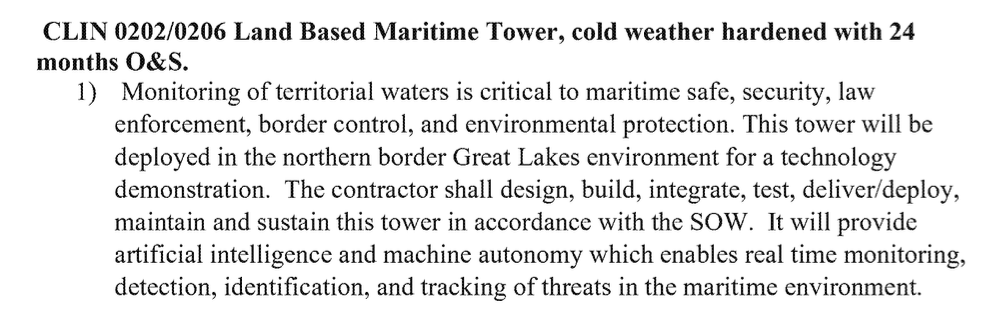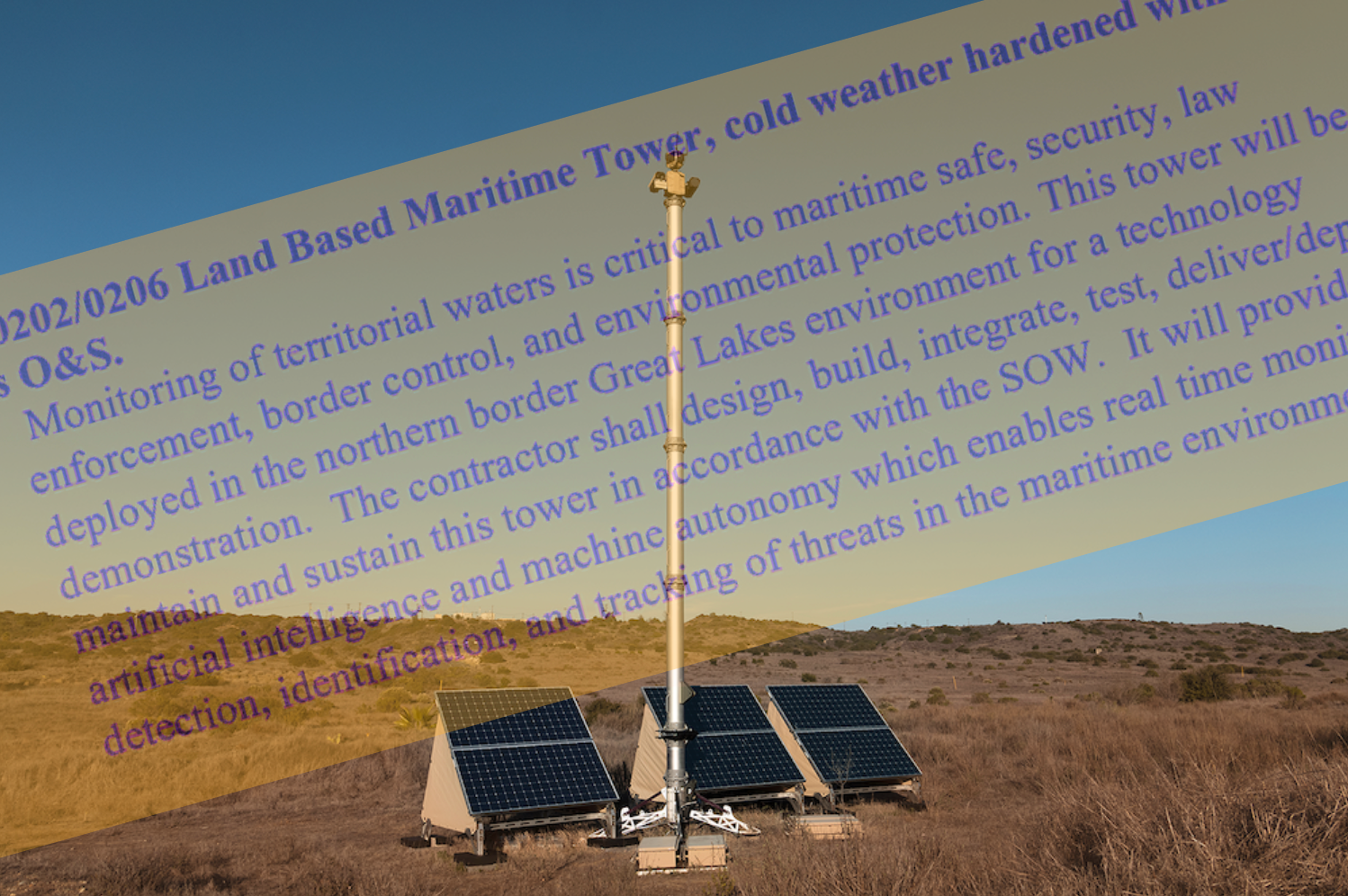U.S. Customs and Border Protection (CBP) plans to test an AI-powered surveillance tower made by Palmer Luckey’s company Anduril in the Great Lakes region near the Canadian border, according to internal CBP documents obtained by 404 Media.
The news shows CBP’s continued investment in AI surveillance technology, both with regards to digital surveillance, like the monitoring of social media of travelers, and that in the physical world, such is the case with this planned surveillance tower and others CBP already uses. It also marks the first time that CBP will be testing a maritime tower that is specifically engineered to weather cold climates, CBP told 404 Media.
“In support of the [CBP] mission of securing our nation’s borders, CBP has a need to procure autonomous border surveillance capabilities,” one of the documents reads. “This capability will serve to enrich relevant CBP information technology systems of record by providing new data streams that support improved situational awareness to ongoing tactical operations and strategic support without requiring additional staffing resources to support.”
Specifically, the document describes a plan to deploy an Autonomous Surveillance Tower (AST) “in the northern border Great Lakes environment for a technology demonstration.” The document does not provide a more granular location than that; the U.S.-Canada border cuts across four of the five Great Lakes (Lake Michigan is entirely in the U.S.) They are spread across Illinois, Indiana, Michigan, Minnesota, New York, Ohio, Pennsylvania, and Wisconsin, as well as Ontario, Canada.
The tower “will provide artificial intelligence and machine autonomy which enables real time monitoring, detection, identification, and tracking of threats in the maritime environment,” the document continues.

The contract for that surveillance tower is with Anduril, another document shows. Luckey founded virtual reality company Oculus before being fired by Oculus owner Facebook and creating Anduril. The startup is worth $8.5 billion, and beyond CBP has contracts with the U.S. Special Operations Command, the Air Force, and other agencies.
Today the company creates all manner of autonomous vehicles and systems including an airborne drone called Ghost, and Anduril recently acquired Blue Force Technologies, which has been developing a new autonomous air vehicle called Fury. Anduril also makes Lattice OS, an operating system for bringing these different technologies together.
“You want to know where all the good guys are, you want to know where all the bad guys are,” Luckey recently told an audience at the Bloomberg Technology Summit.
Anduril calls its autonomous surveillance towers Sentry Towers. Armed with artificial intelligence and various sensors, they are designed to “track objects of interest,” according to Anduril’s website. The “Maritime Sentry Tower,” which this latest CBP test appears to relate to, includes “radar designed to detect boats, jet skis, and other water-borne objects,” Anduril’s website reads.
Originally, Anduril deployed Sentry Towers with CBP on the southern border with Mexico as part of a pilot program, before rolling out dozens. In one 10 week period, Anduril helped border officials catch 55 people, according to WIRED. In 2019, The Daily Beast reported Anduril’s work had expanded to the Canadian border in Montana and Vermont. That report said those tests included a cold-weather variant of the company’s technology, but CBP told 404 Media that this Great Lakes test is specifically the first maritime tower hardened for cold-weather to be tested.
“The Department of Homeland Security is committed to protecting individuals’ privacy, civil rights, and civil liberties. DHS uses various forms of technology in furtherance of its mission, including tools to support investigations related to, among other things, threats to infrastructure, illegal trafficking on the dark web, cross-border transnational crime, and terrorism. DHS leverages this technology in ways that are consistent with its authorities and the law,” a CBP spokesperson told 404 Media in a statement.
Anduril did not respond to a request for comment.


